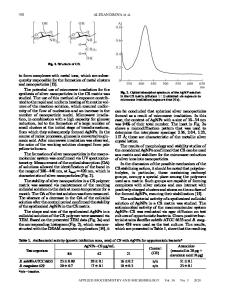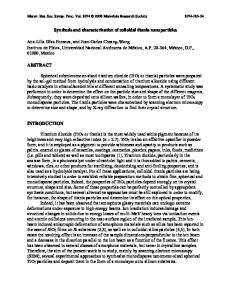Synthesis and characterization of copper nanoparticles stabilized with polyvinyl pyrrolidone and its performance on the
- PDF / 2,173,801 Bytes
- 10 Pages / 595.276 x 790.866 pts Page_size
- 39 Downloads / 350 Views
ORIGINAL PAPER
Synthesis and characterization of copper nanoparticles stabilized with polyvinyl pyrrolidone and its performance on the conductivity and stability of polyindole Mohammad Mehdi Khodaei1,2 · Mohsen Karegar1 Received: 25 July 2020 / Accepted: 26 September 2020 © Iranian Chemical Society 2020
Abstract Copper nanoparticles were prepared by chemical reduction method of C uSO4 in aqueous solution in the presence of poly‑ vinyl pyrrolidone and cetyltrimethylammonium bromide as double capping agents without input of extra inert gases. These nanoparticles with average particle size 61 nm diameter were obtained by varying polyvinyl pyrrolidone concentration. Copper nanoparticles/polyindole composite was further fabricated via a facile in situ polymerization method. The morphol‑ ogy, structure and thermal stability of copper nanoparticles and copper nanoparticles/polyindole composites were studied by different techniques. The effect of copper weight percent on the conductivity of the composite was investigated, and the obtained data exhibited that only 25% weight of copper nanoparticles has the greatest effect in increasing polyindole con‑ ductivity. Furthermore, the performance of copper nanoparticles in the alteration of polyindole conductivity was investigated by SEM images. Keywords Copper nanoparticles · Polyvinylpyrrolidone · Conducting polymer · Polyindole
Introduction In recent years, metal nanoparticles (NPs) have attracted a lot of attention owing to their unique characteristics and wide range of applications [1–9]. Among metal NPs, copper nanoparticles (Cu NPs) have received significant attention due to their advantages such as low cost, having excellent processing and electrical conducting properties. They have wide applications in biomedical materials, electronics, gas sensors, catalysis and high conductivity [10–13]. These NPs have been synthesized by a chemical reduction method which is one of the most convenient methods for the synthe‑ sis of metallic NPs. The synthesis process is simple, and the size and shape of nanostructured copper can be controlled easily. In contrast to noble metals such as Ag, Au and Pt, Cu NPs are difficult to be applied because they are easily * Mohammad Mehdi Khodaei [email protected] 1
Department of Organic Chemistry, Razi University, 67149‑67346 Kermanshah, Iran
Nanoscience and Nanotechnology Research Center (NNRC), Razi University, 67149‑67346 Kermanshah, Iran
2
oxidized in the ambient atmosphere. Therefore, the forma‑ tion of oxide layers on the surface of them is unavoidable. The most common method to obtain stable Cu NPs against oxidation, agglomeration and precipitation is the introduction of a protective agent in the reaction system. Polyvinylpyrrolidone (PVP) as a polymeric protecting agent is one of the capping agents that has been used to protect Cu NPs [14, 15]. PVP not only applied as a protecting agent but it can be used as a surface stabilizer, restricting the oxi‑ dation, nanoparticle dispersant, and reducing agent in the synthesis of
Data Loading...











